Canuck faithful heartbreak
Never Boring: The Up and Down History of the Vancouver Canucks
by Ed Willes
Madeira Park: Harbour Publishing, 2024
$28.95 / 9781990776892
Reviewed by Daniel Gawthrop
*
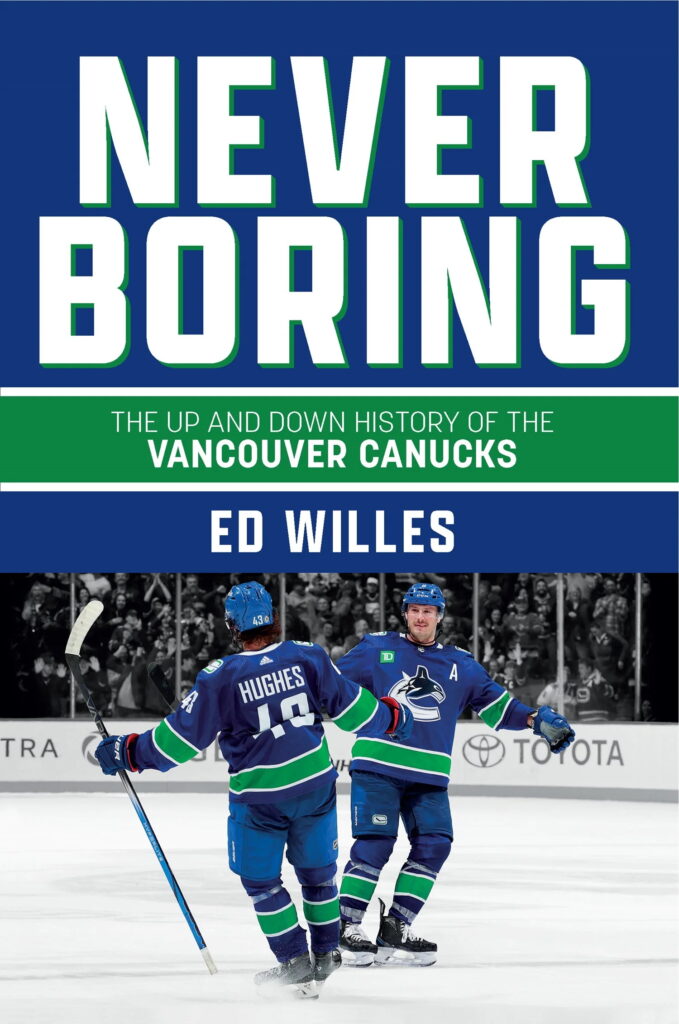
Over the first fifty-four years of their existence, the Vancouver Canucks have made it to the Stanley Cup final three times. As everyone knows, they lost all three—the last two going seven games. In 2011 against the Boston Bruins, the Canucks defied 92.7 per cent odds for all Stanley Cup finalists in history by losing the series after winning the first two games on home ice.
In this colourful team history by Ed Willes, the Canucks emerge as hockey’s equivalent of baseball’s Boston Red Sox, a comparison the author draws in the introduction. (For the uninitiated, the Curse of the Bambino refers to the 86-year championship drought of the Red Sox between 1918 and 2004, a reign of futility attributed to the 1920 trade of Babe Ruth to the New York Yankees.) Long-suffering Toronto Maple Leaf fans frequently complain of their own team’s curse (What do the Leafs have that no other NHL team has? Black-and-white photos of their last Stanley Cup.), and Vancouver’s 1970 expansion mates, the Buffalo Sabres, also have yet to enjoy Cup glory. But as Willes argues convincingly, the hockey gods have truly frowned on the Canucks like no other NHL franchise.

The chapters are titled as “what if” questions, the answers to which suggest a different outcome had those hockey gods been cooperating. Underlying the conspiracy theories and otherworldly forces are some all-too-human flaws that have long dogged the franchise: unstable or meddling ownership, dreadful front office management through poor drafting, lousy trades and albatross free agent signings, and failure to develop promising young talent. In charting the misery of this franchise, interrupted by brief windows of promise and potential, Willes is meticulous in identifying the signposts.
*
Most Canuck fans think the curse began with the infamous roulette wheel at the 1970 draft, where the Canucks ended up with Dale Tallon instead of Gilbert Perrault. But as Willes reveals, the team’s problems predate its first season by six years. “What if Stafford Smythe hadn’t been a vindictive jerk?” goes the opening chapter heading, introducing “the debacle that passes as the Canucks origin story.” In 1964, the NHL was looking at expanding by six teams, and Vancouver was under consideration for one of them. The Leafs president and co-owner wanted the city to have an NHL franchise—but only if an $8 million arena were built downtown and he was given the land it was built on—preferably some prime real estate near the Bayshore Hotel or the Queen Elizabeth Theatre. When a plebiscite voted down the building proposal, Smythe—a future convicted tax evader—called Vancouver a “bush-league city” that wouldn’t get a sniff of NHL action for another generation. It would only be another three years, but the manner in which Vancouver’s bid for 1967 expansion collapsed gave much credence to Smythe’s insult. A large cast of characters made the initial bid for a franchise, but the league voted it down—with Smythe giving it the biggest middle finger.

As Willes reminds us, Canucks ownership has been anything but boring. It began with Tom Scallen, an American medical insurance executive who, within three years of buying the team, would serve a nine-month jail sentence for securities fraud at Oakalla prison. There was some stability under the hometown Griffiths family, until Arthur Griffiths bit off more than he could chew while finally delivering a downtown rink: by selling the team and General Motors Place to Seattle billionaire John McCaw, he left the Canucks with an absentee owner who didn’t care about the sport. (While sinking more money into the ill-fated Grizzlies NBA franchise, McCaw left the hockey decisions to an obnoxious underling, Stan McCammon, who alienated everyone in the Canucks front office.) Finally, there are the Aquilinis: a family investment group who, after pulling a fast one on potential partners Tom Gaglardi and Ryan Beedle (going behind their backs to win exclusive ownership), launched a new era of unpredictable hands-on stewardship.
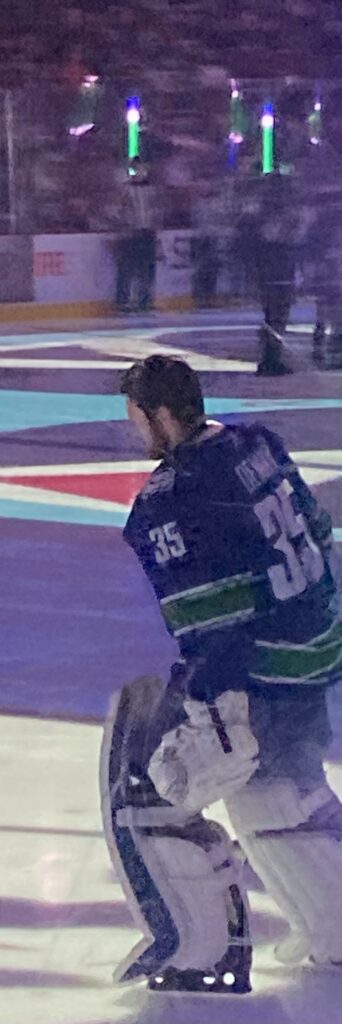
For management and players, Willes includes all the highs and lows. On the up side, there was the Pat Quinn era (1987-97), which produced the thrilling ’94 Cup final and the greatest trade in team history (Markus Naslund for Alek Stojanov) as well as franchise players Trevor Linden and superstar Pavel Bure; the best of the Brian Burke regime, including the draft day theatrics that secured both Daniel and Henrik Sedin, and the league dominance of the West Coast Express line (until the Steve Moore incident); and the Mike Gillis/Alain Vigneault reign at its peak, when the Sedins matured into leaders and Roberto Luongo backstopped the team to the 2011 Cup final. There’s also the current edition of the Canucks, led by three-time Cup-winning president Jim Rutherford, best general manager finalist Patrik Allvin, and coach-of-the-year Rick Tocchet—a team with an outstanding core of captain Quinn Hughes (the Canucks’ first ever Norris Trophy-winner), Elias Pettersson, J.T. Miller, Brock Boeser, and Thatcher Demko.
But for all the good, there has been so much more bad. From terrible trades (Cam Neely and a first-round draft pick for Barry Pederson, Tiger Williams and Jerry Butler for Rick Vaive and Bill Derlago) and awful free-agent signings (Mark Messier, Loui Eriksson) to the biggest draft busts (the forgettable Patrick White, choosing Olli Juolevi over Matthew Tkachuk), Willes covers it all. He’s at his best on two periods of infamy in particular.
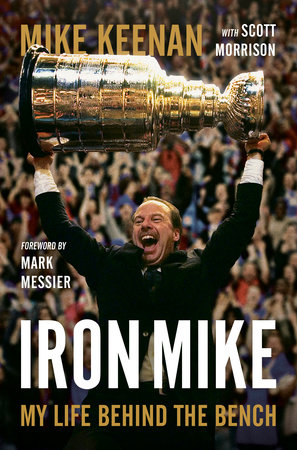
The Mark Messier era (1997-2000) stank to high heaven. Willes reveals that, having failed to bring Wayne Gretzky to the Canucks the previous year (because McCammon demanded a yes or no answer on the contract offer at 2 a.m., within minutes of making it), McCaw and his deputy then went after Messier, usurping Quinn’s role as general manager. They gave the six-time Stanley Cup winner whatever he wanted, including $6 million a year, the captaincy (Trevor Linden voluntarily gave it up) and his number 11, despite the Canucks having retired that number decades earlier after Wayne Maki’s death from brain cancer. Once Quinn and coach Tom Renney were out of the way, it also included his choice of coach. Messier wanted his Rangers comrade, “Iron Mike” Keenan, who was given general manager’s powers without the title. When the losses piled up, Keenan began trading away key players from the ’94 team, including Linden.
“Linden had bled for the Canucks. He was instrumental in turning the franchise around. He gave himself to the community and he was loved in Vancouver,” notes Willes. “And then he was kicked to the curb by the coach and player who’d dealt the Canucks the most bitter defeat in the team’s history. Perfect.”
And that wouldn’t be his last kicking to the curb by the team he’d bled for. Willes has much to say about Linden’s 2014 hiring as president of hockey operations—a role that other retired players of his generation, including Cam Neely in Boston and Joe Sakic in Colorado, had successfully embraced. Fatefully, Linden made his biggest mistake with his first two hirings, a couple of fellow Albertans with no more experience in their positions than he had in his: Jim Benning as general manager and Willie Desjardins as coach. This is the other period of infamy where Willes’s take is most interesting.
For many Canuck fans, Linden will always be the franchise Golden Boy who can do no wrong. To this day, most observers are sympathetic to his point of view during an argument with the Aquilinis that led to his ouster: his belief that the Canucks were trending downward and needed to embark on a total rebuild. But it was Linden’s decision to hire Benning, who took the owners’ side in this dispute and ended up taking Linden’s job, that would set the Canucks on such a destructive path over seven frustrating years. Willes spoke to both men for this book, in Benning’s case one of the few interviews he has granted since his own firing in 2021. The sense of lingering distrust and hurt feelings on both sides makes for riveting reading.
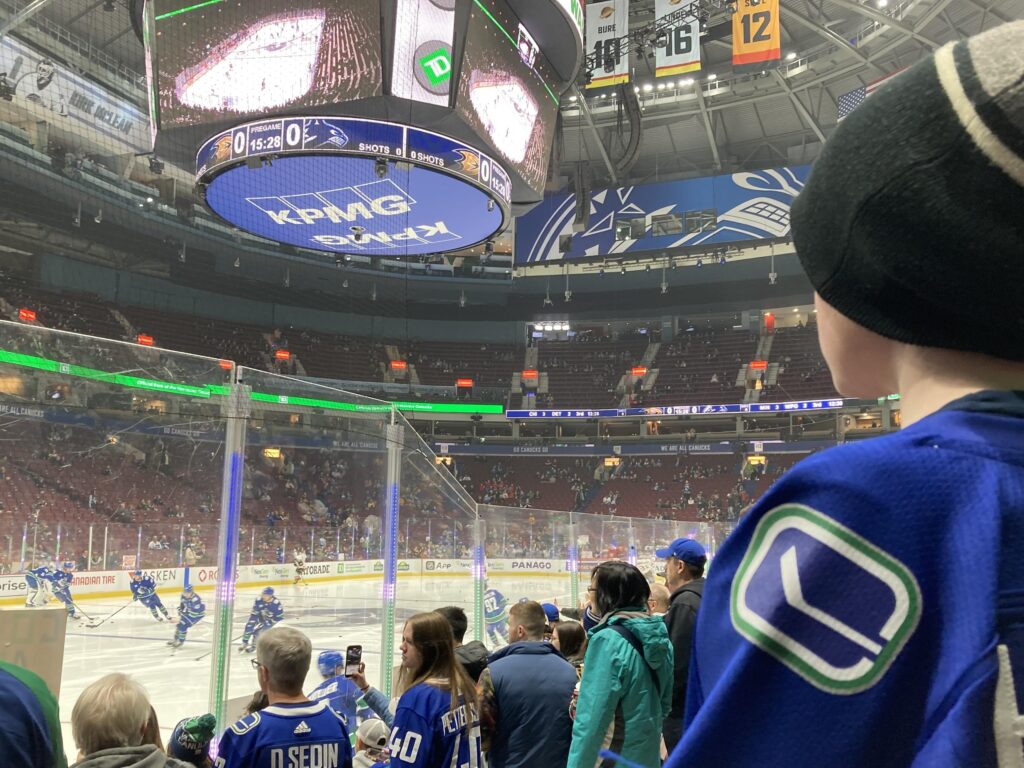
There’s also a stunning revelation from Benning about the infamous COVID off-season of 2020. At the time, the beleaguered GM was roundly blasted for allowing key players to walk away from the Canucks as unrestricted free agents without signing anyone to replace them. The reason? The Aquilinis had turned off the tap, refusing to allow him to sign anyone. By the time they gave the go-ahead once more, Braden Holtby was no replacement for Jacob Markstrom.
*
Never Boring lives up to its title—this reader gobbled it up in a single sitting. Billed as “an irreverent look back” on the Canucks’ history, it’s clearly the product of a veteran sports journalist whose best work reflected both his access to sources and trustworthiness as a beat reporter. Unlike Province columnist Tony Gallagher and other Vancouver media personalities who were routinely banned from Canucks events (CKNW’s Neil Macrae comes to mind), this Province and Sun scribe, who retired in 2020, never made a habit of causing offense with eviscerating critiques of the very sources he was so adept at cultivating.
That said, his irreverence could have been a bit more biting on a few topics, “towel power” and the Canucks’ legacy of brand confusion being just two examples. Coach Roger Neilson’s sarcastic gesture of surrender to on-ice officials during the 1982 Western Conference final—all those white towels on sticks—spoke volumes about the Canucks’ underdog status and the NHL’s bias toward its eastern establishment teams. And the fans’ white towel-waving even made ironic sense for those two Cup final home games, given how badly the Canucks were outclassed. But “towel power” should have been consigned to the dustbin after that, for nothing screams inferiority complex quite like a fan ritual that reminds everyone of your team’s perennial challenger role and reputation for whining about the refs.
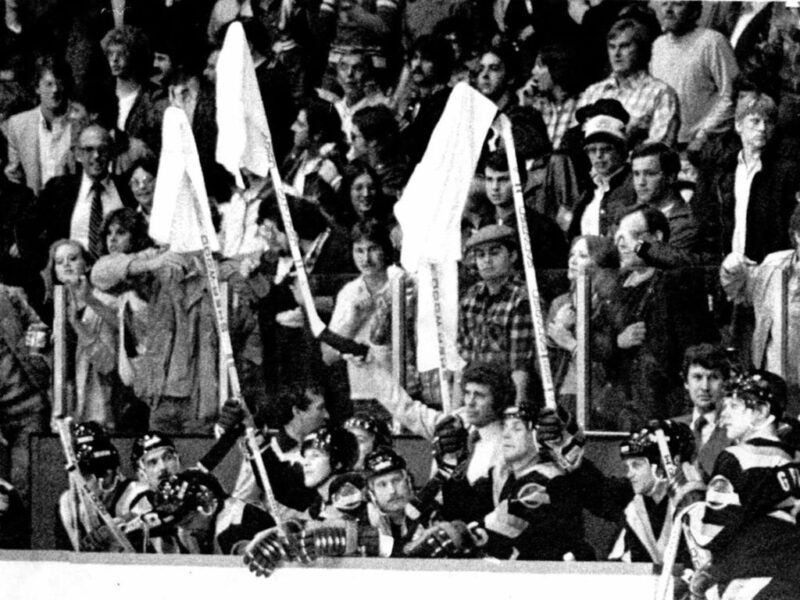
As for branding, it’s hard to boost fan pride—much less establish team identity—when you keep changing your look every few years. Unlike the Original Six teams and others such as the Philadelphia Flyers and St. Louis Blues, who have retained their original logos and made only minor adjustments to their colour schemes, the Canucks have been through at least two logo redesigns and four colour switches, the initial rebrand occurring before their first decade was over. (There’s a fourth logo, if you count the Johnny Canuck crest of the Abbotsford farm team.)

Some insight about the Stanley Cup riots would also have been welcome. Oddly, Willes apologizes for any insensitivity in addressing the COVID woes of a professional sports team during the pandemic but says nothing about the two most infamous outcomes of Canuck Stanley Cup losses—events that resulted in hundreds of arrests, millions of dollars in damage, and a black eye for the city of Vancouver’s reputation. Instead, all we get is some play-by-play handwringing as the clock ticks away on the Canucks’ championship dreams. (In 1994: “Nathan LaFayette hit the post, the game ended and there were riots in Vancouver. Perfect.” In 2011, the “dagger” goal by Patrice Bergeron “made it 3-0 Boston, and lest you thought it couldn’t get any worse, every fricking yahoo who lived within a 100-kilometre radius of Vancouver was rioting downtown by the end of the game.”) Willes would protest that he’s a sportswriter and not a social scientist, but that’s a cop-out. He surely had thoughts about these events and what they revealed about the peculiar depths of Canuck Nation angst. So a chapter called “What if Nathan LaFayette’s shot went in and there were no public street parties for the 2011 Cup final?” would have been a compelling addition.
All that aside, Willes has filled in a lot of the blanks to produce a fascinating team history that gives credence to the “curse” mythology. He also made the right decision by delaying publication until this fall. On the heels of the team’s most successful season since 2011, Canucks Nation just might, once again, have reason for hope – slow start to the season notwithstanding.
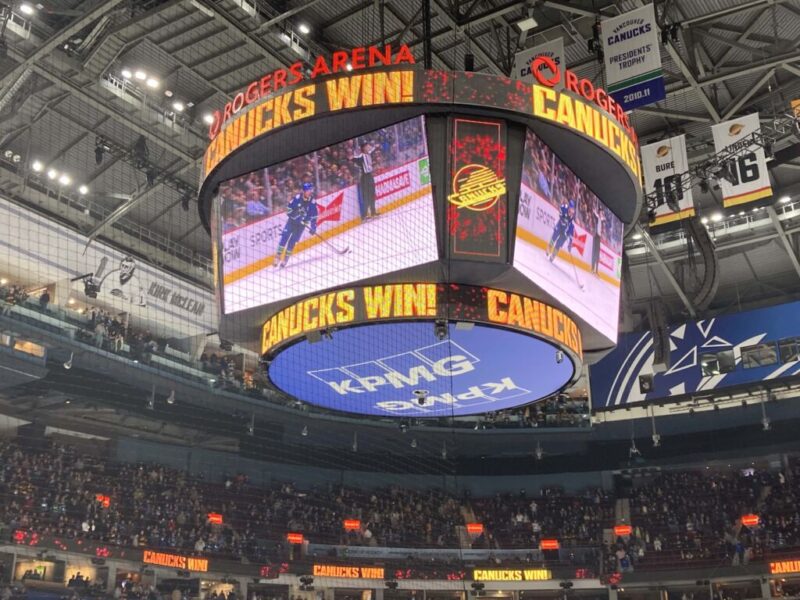
*
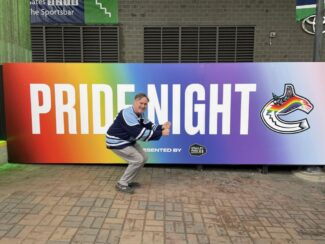
Daniel Gawthrop, who wrote an essay about the Canucks curse for The British Columbia Review before the playoffs last spring, is the author of the novel Double Karma (Cormorant) and five non-fiction titles including The Rice Queen Diaries (Arsenal Pulp Press). He’s a founding member of The Cutting Edges, Vancouver’s LGBTQ+ hockey association, for whom he still plays left wing. [Editor’s note: Daniel Gawthrop has reviewed Billy-Ray Belcourt, Yeji Y. Ham, Chad Soon and George Chiang, Hirsch and Cheryl A. MacDonald and Jonathon R.J. Edwards (editors), Valerie Jerome, Niloufar-Lily Soltani, and Brett Popplewell for BCR.]
*
The British Columbia Review
Interim Editors, 2023-25: Trevor Marc Hughes (non-fiction), Brett Josef Grubisic (fiction and poetry)
Publisher: Richard Mackie
Formerly The Ormsby Review, The British Columbia Review is an online book review and journal service for BC writers and readers. The Advisory Board now consists of Jean Barman, Wade Davis, Robin Fisher, Barry Gough, Hugh Johnston, Kathy Mezei, Patricia Roy, Maria Tippett, and Graeme Wynn. Provincial Government Patron (since September 2018): Creative BC. Honorary Patron: Yosef Wosk. Scholarly Patron: SFU Graduate Liberal Studies. The British Columbia Review was founded in 2016 by Richard Mackie and Alan Twigg.
“Only connect.” – E.M. Forster
2 comments on “Canuck faithful heartbreak”